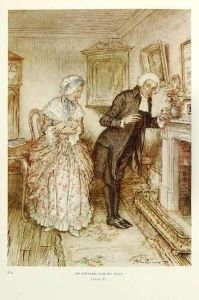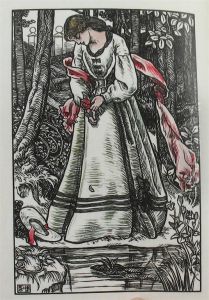Oliver Goldsmith Paintings
Oliver Goldsmith was an Irish novelist, playwright, and poet, who is best known for his novel 'The Vicar of Wakefield' (1766), his pastoral poem 'The Deserted Village' (1770), and his plays 'The Good-Natur'd Man' (1768) and 'She Stoops to Conquer' (1771). He was born on November 10, 1728, in the town of Pallas, County Longford, Ireland. His father was an Anglican clergyman, which provided Goldsmith with a relatively stable, though not wealthy, upbringing.
Despite an erratic education journey, with studies at Trinity College, Dublin, starting in 1744, and attempts at studying law and medicine at various institutions, Goldsmith eventually found his calling in writing. His early career was marked by financial instability and a period of travel throughout Europe, which would later influence his written works.
In London, Goldsmith began to rise in literary circles, contributing to various periodicals and making acquaintances with other literary figures, including Samuel Johnson, with whom he formed a lasting friendship. Johnson was part of a group of writers who would become known as the Club, which also included Joshua Reynolds and Edmund Burke. Goldsmith's literary career took off in the 1760s with the publication of 'The Vicar of Wakefield'. It was followed by a series of successful plays and poems that addressed social issues and reflected his concerns about the changes he saw in rural society.
Despite his literary successes, Goldsmith struggled financially due to a lack of financial acumen and died in debt on April 4, 1774. His works, nevertheless, have continued to be celebrated for their satirical wit, compassion, and vivid characterizations. Goldsmith's writing style combined sentiment with social commentary, and his works remain an important part of the canon of 18th-century English literature.

